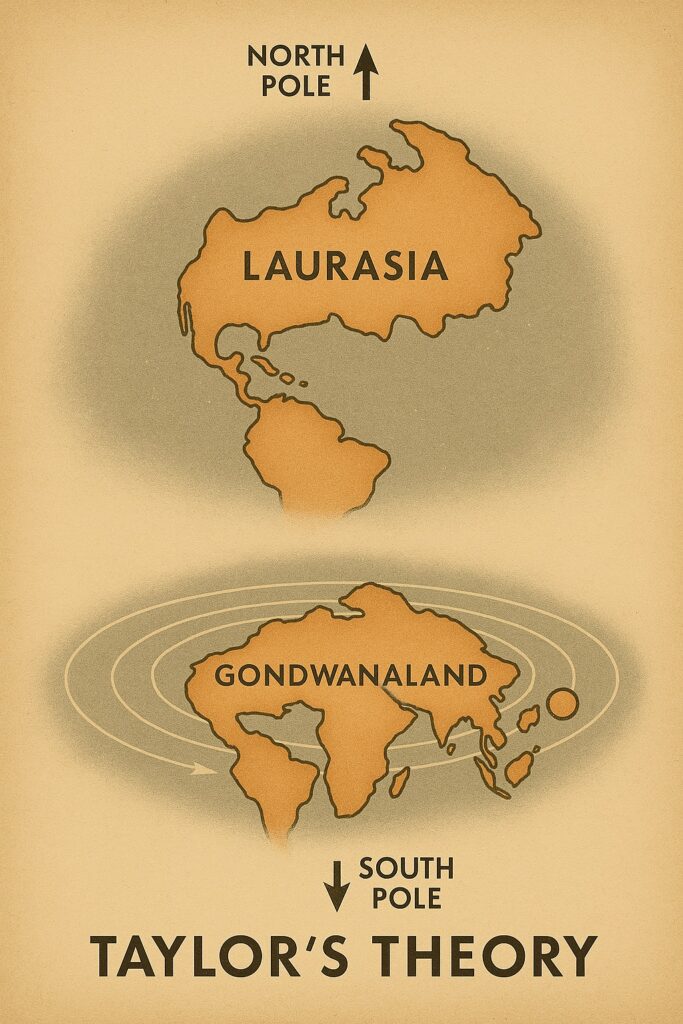The Continental Drift Theory was proposed by Frank B. Taylor in 1910. It was one of the earliest scientific ideas suggesting that continents are not fixed but move over the Earth’s surface. The theory played an important role in shaping the concept of continental mobility, which ultimately led to the development of the modern Plate Tectonics Theory.

Table of Contents
Why Did He Propose This Theory?
Taylor wanted to explain why some huge mountain ranges, like the:
-
Rockies and Andes (in North and South America),
-
Himalayas, Alps, and Caucasus (in Europe and Asia)
were located in a particular pattern. Earlier theories (like contraction theory) couldn’t explain this. So Taylor suggested a new idea — that continents had moved, and this movement formed mountains.
Continental Drift Theory of Taylor
Taylor proposed that there were two major landmasses in the geological past:
-
Laurasia – located near North Pole, Laurasia comprised what are now North America, Europe, and parts of Asia.
-
Gondwanaland – located near South Pole, Gondwanaland included the present-day continents of South America, Africa, Antarctica, Australia, and the Indian subcontinent.
He proposed that continents drifted due to tidal forces generated by the gravitational pull of the Moon on Earth.
He said there were two types of movements:
-
Equator-ward movement (north-south direction)
-
Westward movement (east-west direction)
What Happened Due to the Movement?
The landmasses split and moved apart, creating:
- Seas and bays, like Baffin Bay, Labrador Sea, Davis Strait
- Ocean basins, like the Atlantic Ocean and Indian Ocean
- Features in Antarctica, like the Ross Sea
- As the continents drifted, their edges crumpled, and mountains formed, just like how a carpet folds when pushed from one side.
- As the Landmasses started their journey towards equator, the landmass got divided into different parts due to tension force.
How Did Mountains Form?
When continents moved toward the equator, they collided and folded, creating:
-
-
Himalayas
-
Alps
-
Caucasus
-
When continents moved westward, it formed:
-
-
Rockies
-
Andes
-

As continents moved and collided with oceanic crust or other landmasses, the edges of drifting continents crumpled, forming mountain ranges.
Criticism
Although Taylor’s theory lacked the detailed mechanism to explain how continents moved, it laid the foundation for future research. His ideas were later expanded and refined by Alfred Wegener, whose Continental Drift Theory gained wider acceptance. Nevertheless, Taylor’s contribution remains significant because he emphasized that continents were dynamic, not static, and could change positions over time.
In conclusion, the Continental Drift Theory of Taylor was an essential step in understanding the evolution of the Earth’s surface. By highlighting the mobility of continents and correlating geological structures across oceans, Taylor set the stage for the modern theory of plate tectonics, which today explains earthquakes, volcanic activity, and the formation of mountains.
His theory was one of the first steps toward the modern idea of continental drift and plate tectonics.
Read: Geography Notes